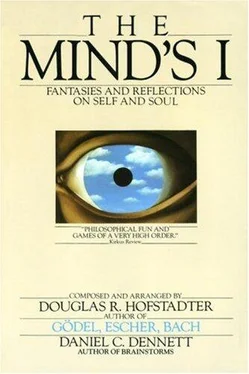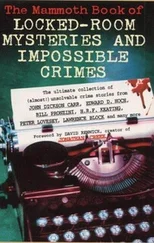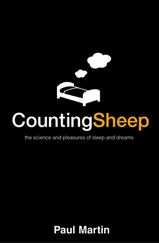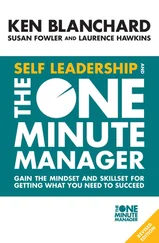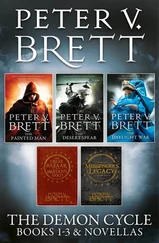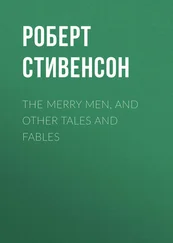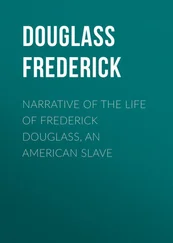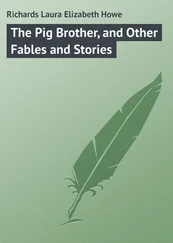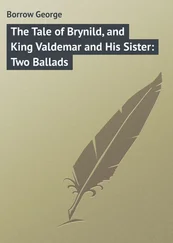He laughed. Angrily she took the hammer in both hands, raised it, and brought it down hard.
But with a shrill noise like a cry of fright the beats had pulled its mandibles from the socket and moved suddenly backwards. The hammer cracked solidly into the floor, on a section of tile that had been obscured from view by the body of the machine. The tile was pockmarked with indentations.
Dirksen looked up. Hunt was laughing. The machine had moved two metres away and stopped, eyeing her. No, she decided, it was not eyeing her. Irritated with herself, Dirksen grasped her weapon and stalked cautiously forward. The machine backed away, a pair of red lights on the front of it glowing alternately brighter and dimmer at the approximate alphawave frequency of the human brain. Dirksen lunged, swung the hammer, and missed —
Ten minutes later she returned, flushed and gasping, to Hunt. Her body hurt in several places where she had bruised it on jutting machinery, and her head ached where she had cracked it under a workbench. “It’s like trying to catch a big rat! When do its stupid batteries run down anyway?”
Hunt checked his watch. “I’d guess it has another half hour, provided you keep it busy. He pointed beneath a workbench, where the beast had found another electrical outlet. “But there is an easier way to get it.”
“I’ll take it.”
“Put the hammer down and pick it up.”
“Just… pick it up?”
“Yes. It only recognizes danger from its own kind—in this case the steel hammer head. It’s programmed to trust unarmed protoplasm.”
She laid the hammer on a bench, walked slowly over to the machine. It didn’t move. The purring had stopped, pale amber lights glowed softly. Dirksen reached down and touched it tentatively, felt a slight vibration. She gingerly picked it up with both hands. Its lights changed to a clear green colour, and through the comfortable warmth of its metal skin she could feel the smooth purr of motors.
“So now what do I do with the stupid thing?” she asked irritably.
“Oh, lay him on his back on the workbench. He’ll be quite helpless in that position, and you can bash him at your leisure.”
“I can do without the anthropomorphisms,” Dirksen muttered as she followed Hunt’s suggestion, determined to see this thing through.
As she inverted the machine and set it down, its lights changed back to red. Wheels spun briefly, stopped. Dirksen picked up the hammer again, quickly raised it and brought it down in a smooth arc which struck the helpless machine off-centre, damaging one of its wheels and flipping it right side up again. There was a metallic scraping sound from the damaged wheel, and the beast began spinning in a fitful circle. A snapping sound came from its underbelly, the machine stopped, lights glowing dolefully.
Dirksen pressed her lips together tightly, raised the hammer for as final blow. But as she started to bring it down there came from within the beast a sound, a soft crying that rose and fell like a baby whimpering. Dirksen dropped the hammer and stepped back, her eye son the blood-red pool of lubricating fluid forming on the table beneath the creature. She looked at Hunt, horrified. “It’s… it’s —”
“Just a machine,” Hunt said, seriously now, “Like these, its evolutionary predecessors.” His gesturing hands took in the array of machinery in the workshop around them. Mute and menacing watchers. “But unlike them it can sense its own doom and cry out for succour.”
“Turn it off,” she said flatly.
Hunt walked to the table, tried to move its tint power switch. “You’ve jammed it, I’m afraid.” He picked up the hammer from the floor where it had fallen. “Care to administer the death blow?”
She stepped back, shaking her head as Hunt raised the hammer. “Couldn’t you fix—” There was a brief metallic crunch. She winced, turned her head. The wailing had stopped, and they returned upstairs in silence.
Jason Hunt remarks, “But it isn’t always easy to know who or what has feelings.” This is the crux of the selection. At first Lee Dirksen seizes on self-reproductive power as the essence of the living. Hunt quickly points out to her that inanimate devices can self-assemble. And what about microbes, even viruses, which carry within them instructions for their own replication? Have they souls? Doubtful!
Then she turns to the idea of feeling as the key. And to drive this point home, the author pulls out ever stop in the emotional organ, in trying to convince you that there can be mechanical, metallic feelings—a contradiction in terms, it would surely seem. Mostly it comes as a set of sublimal appeals to the gut level. He uses phrases like “Aluminium beetle,” “soft purring,” “shrill noise like a cry of fright,” “eyeing her,” “gentle vibration,” “the comfortable warmth of its metal skin,” “helpless machine,” “spinning in a fitful circle,” “lights gleaming dolefully.” This all seems quite blatant—but how could he have gone further than his next image; that of the “blood-red pool of lubricating fluid forming on the table beneath the creature,” from which (or from whom?) is emanating a “soft crying wail that rose and fell like a baby whimpering”? Now, really!
The imagery is so provocative that one is sucked in. One may feel manipulated, yet one’s annoyance at that cannot overcome one’s instinctive sense of pity. How hard it is for some people to drown an ant in their sink by turning on the faucet! How easy for others to feed live goldfish to their pet piranhas each day! Where should we draw the line? What is sacred and what is indispensable?
Few of us are vegetarians or even seriously consider the alternative during our lives. Is it because we feel at ease with the idea of killing cows and pigs and so on? Hardly. Few of us want to be reminded that there is a hunk of dead animal on our plate when we are served a steak. Mostly, we protect ourselves by a coy use of language and an elaborate set of conventions that allow us to maintain a double standard. The true nature of meat eating, like the true nature of sex and excretion, is only easy to refer to implicitly, hidden in euphemistic synonyms and allusions: “veal cutlets,” “making love,” “going to the bathroom.” Somehow we sense that there is soul-killing going on in slaughterhouses, but our palates don’t want to be reminded of it.
Which would you more easily destroy—a Chess Challenger VII that can play a good game of chess against you and whose red lights cheerfully flash as it “ponders” what to do next, or the cute little Teddy bear that you used to love when you were a child? Why does it tug at the heartstrings? It somehow connotes smallness, innocence, vulnerability.
We are so subject to emotional appeal yet so able to be selective in our attribution of soul. How were the Nazis able to convince themselves it was all right to kill Jews? How were Americans so willing to “waste gooks” in the Vietnam war? It seems that emotions of one sort—patriotism—can act as a valve, controlling the other emotions that allow us to identify, to project—to see our victim as (a reflection of) ourselves.
We are all animists to some degree. Some of us attribute “personalities” to our cars, others of us see our typewriters or our toys as “alive,” as possessors of “souls.” It is hard to burn some things in a fire because some piece of us is going up in flames. Clearly the “soul” we project into these objects is an image purely in our minds. Yet if that is so, why isn’t it equally so for the souls that we project into our friends and family?
We all have a storehouse of empathy that is variously hard or easy to tap into, depending on our moods and on the stimulus. Sometimes mere words or fleeting expressions hit the bull’s-eye and we soften. Other times we remain callous and icy, unmovable.
Читать дальше
